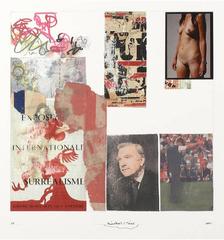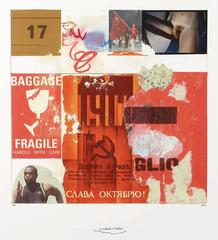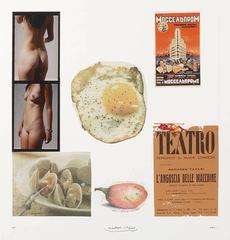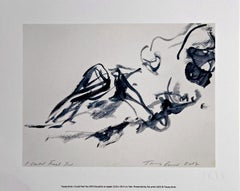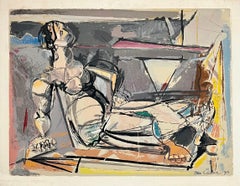Richard Meier Nude Prints
Richard Meier is a world renowned architect. He began making collages almost 55 years ago, as a young student in Rome collecting crumpled papers and other detritus he found strewn throughout the city's ancient streets. Meier joins a rich tradition of architects devoted to the art of collage, including Mies van der Rohe's De Stijl-inflected outings, Archigram and Superstudio's psychedelic utopian visions, and OMA's postmodernist mashups. Collaging, after all, is a practice that, like architecture, involves the manipulation of space, the juxtaposition of materials and a considerable amount of world-building.
2010s Contemporary Richard Meier Nude Prints
Mixed Media, Screen
2010s Contemporary Richard Meier Nude Prints
Mixed Media, Screen
Contemporary Richard Meier Nude Prints
Mixed Media, Screen
2010s Contemporary Richard Meier Nude Prints
Giclée
Mid-20th Century Cubist Richard Meier Nude Prints
Screen
1970s Pop Art Richard Meier Nude Prints
Screen, Paper
20th Century Contemporary Richard Meier Nude Prints
Mixed Media, Screen
Mid-20th Century Abstract Richard Meier Nude Prints
Lithograph
20th Century Abstract Geometric Richard Meier Nude Prints
Screen
2010s Surrealist Richard Meier Nude Prints
Photographic Paper
Early 2000s Contemporary Richard Meier Nude Prints
Screen
2010s Contemporary Richard Meier Nude Prints
Screen
2010s Surrealist Richard Meier Nude Prints
Photographic Paper
2010s Surrealist Richard Meier Nude Prints
Photographic Paper
1970s Contemporary Richard Meier Nude Prints
Lithograph
Paul WunderlichPaul Wunderlich, Torso on a Blue Stone, Memories and Portraits of Artists, 1972, 1972
Richard Meier nude prints for sale on 1stDibs.
Artists Similar to Richard Meier
- 1stDibs ExpertApril 5, 2022Richard Meier is most often associated with the 20th-century branch of the Rationalist movement. Rationalism prizes logical, ordered designs rather than ornamental flourishes. On 1stDibs, you’ll find a collection of expertly-vetted vintage and contemporary Richard Meier pieces from some of the world’s top sellers.
